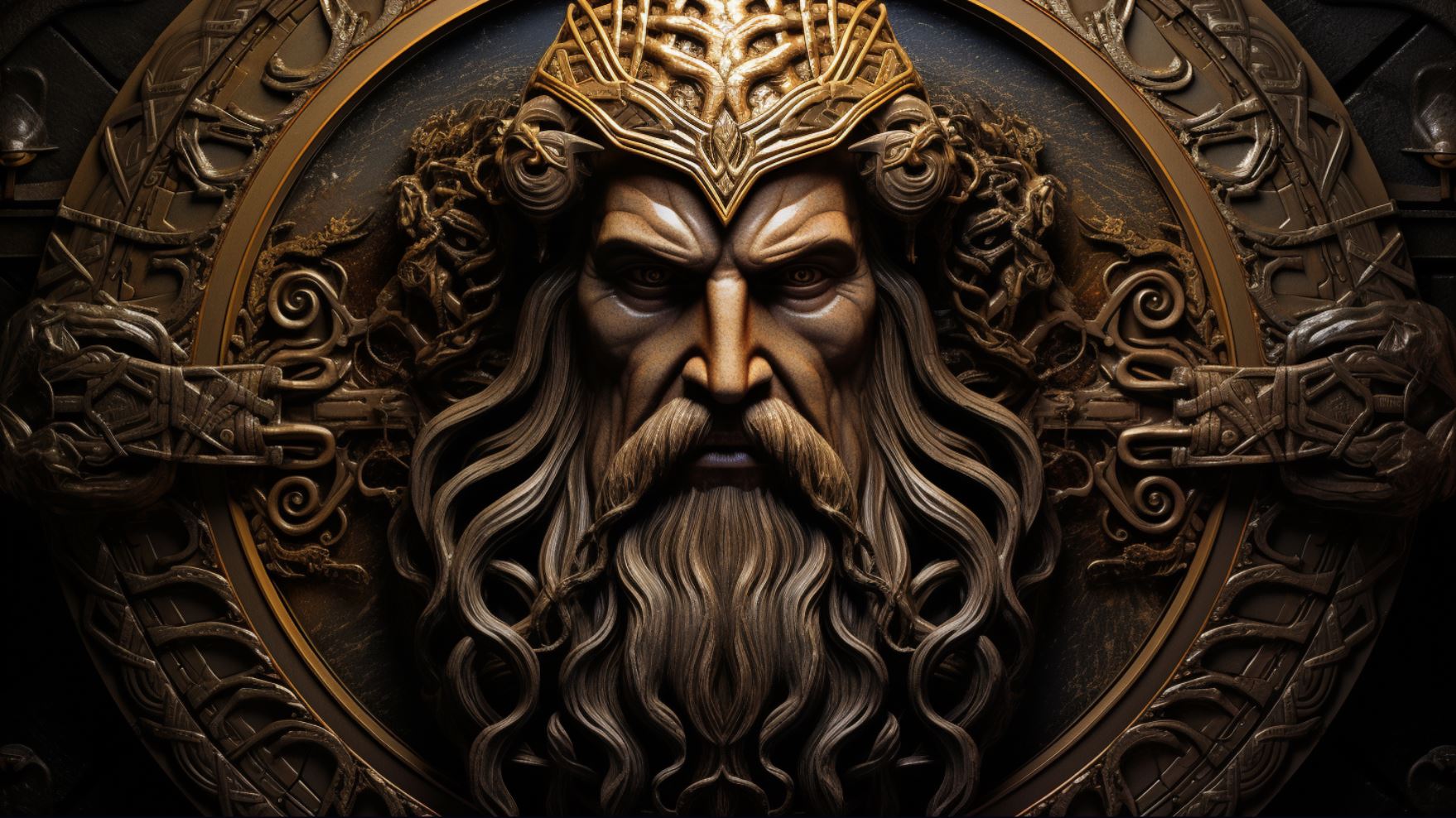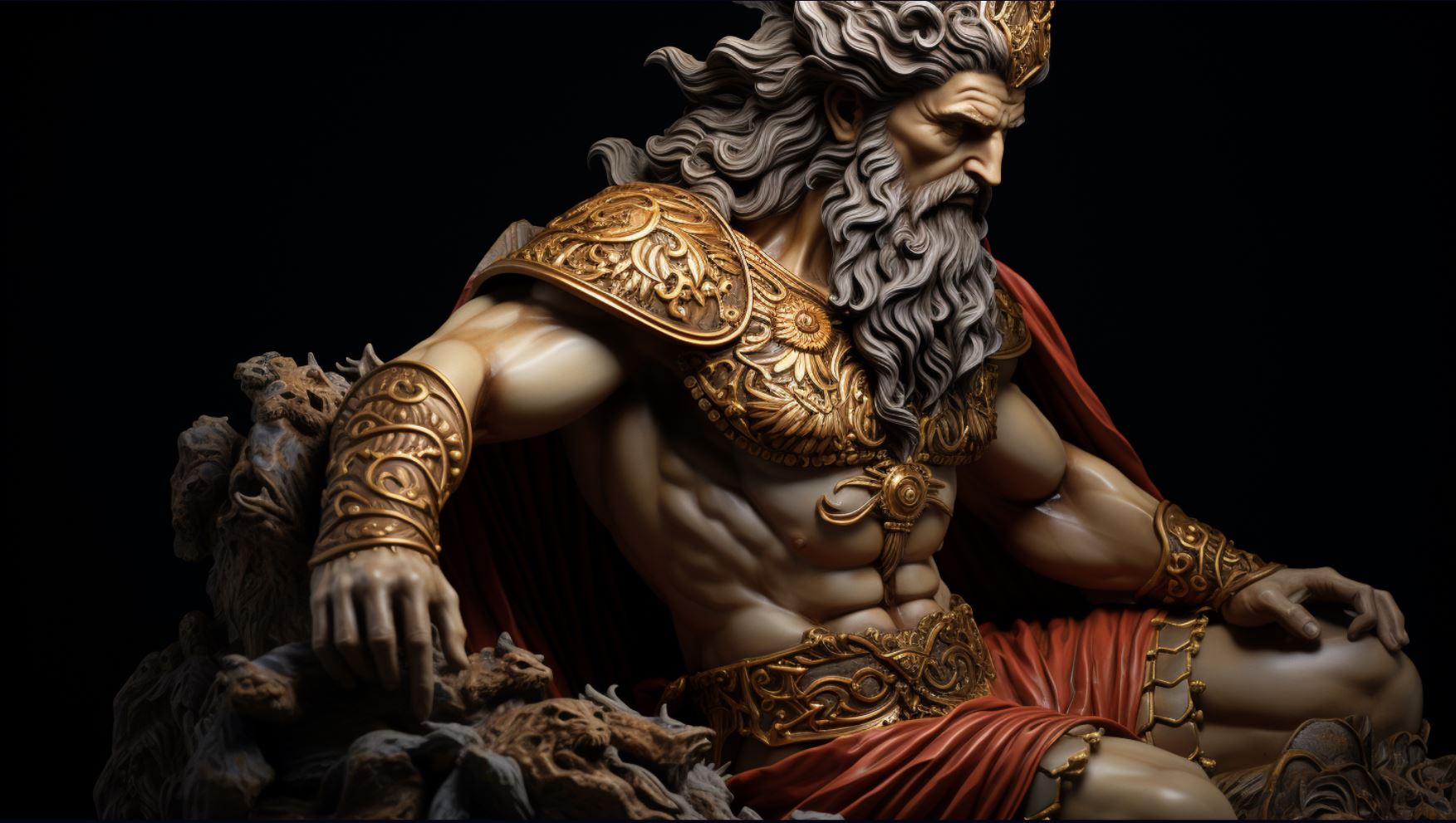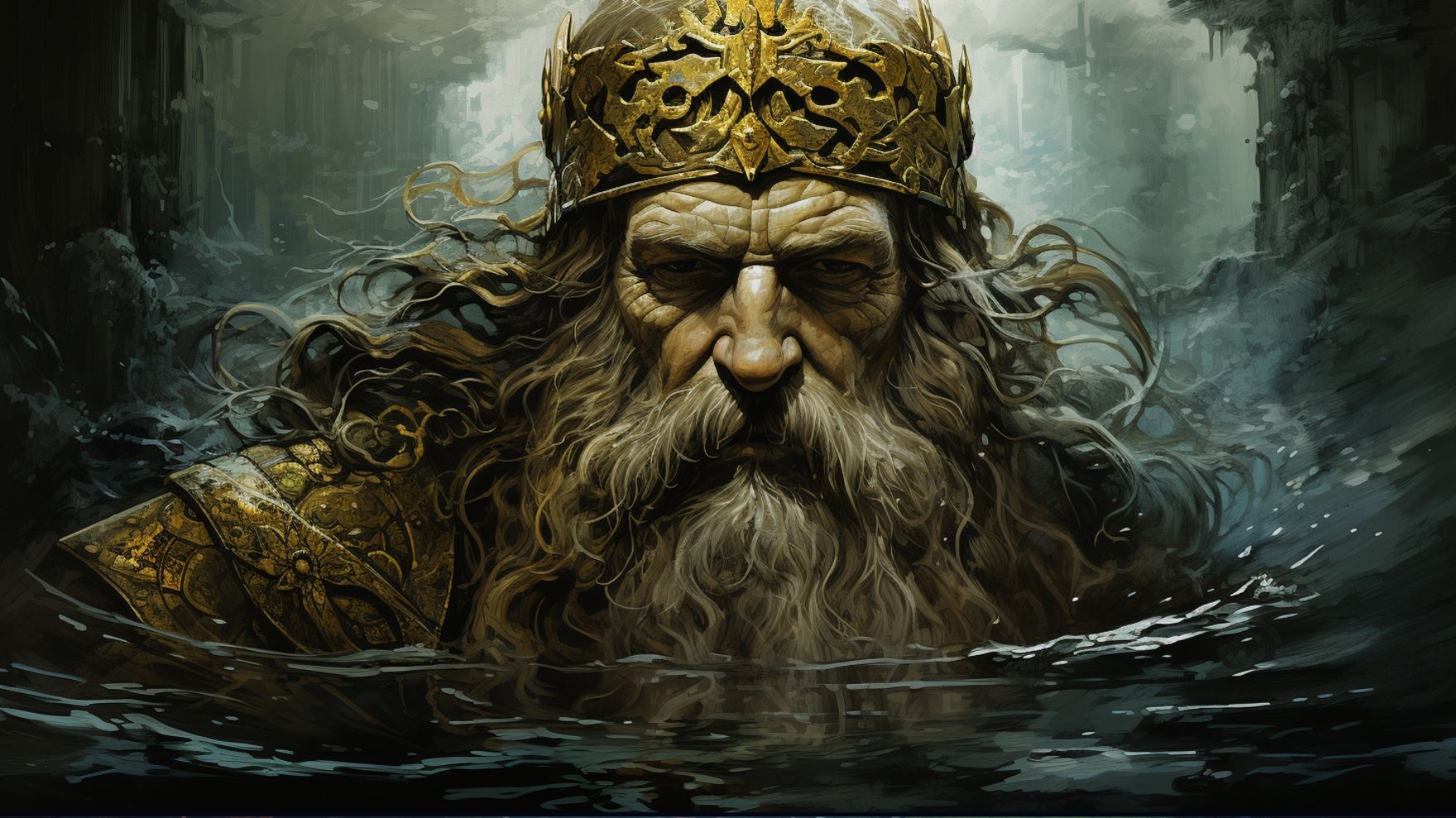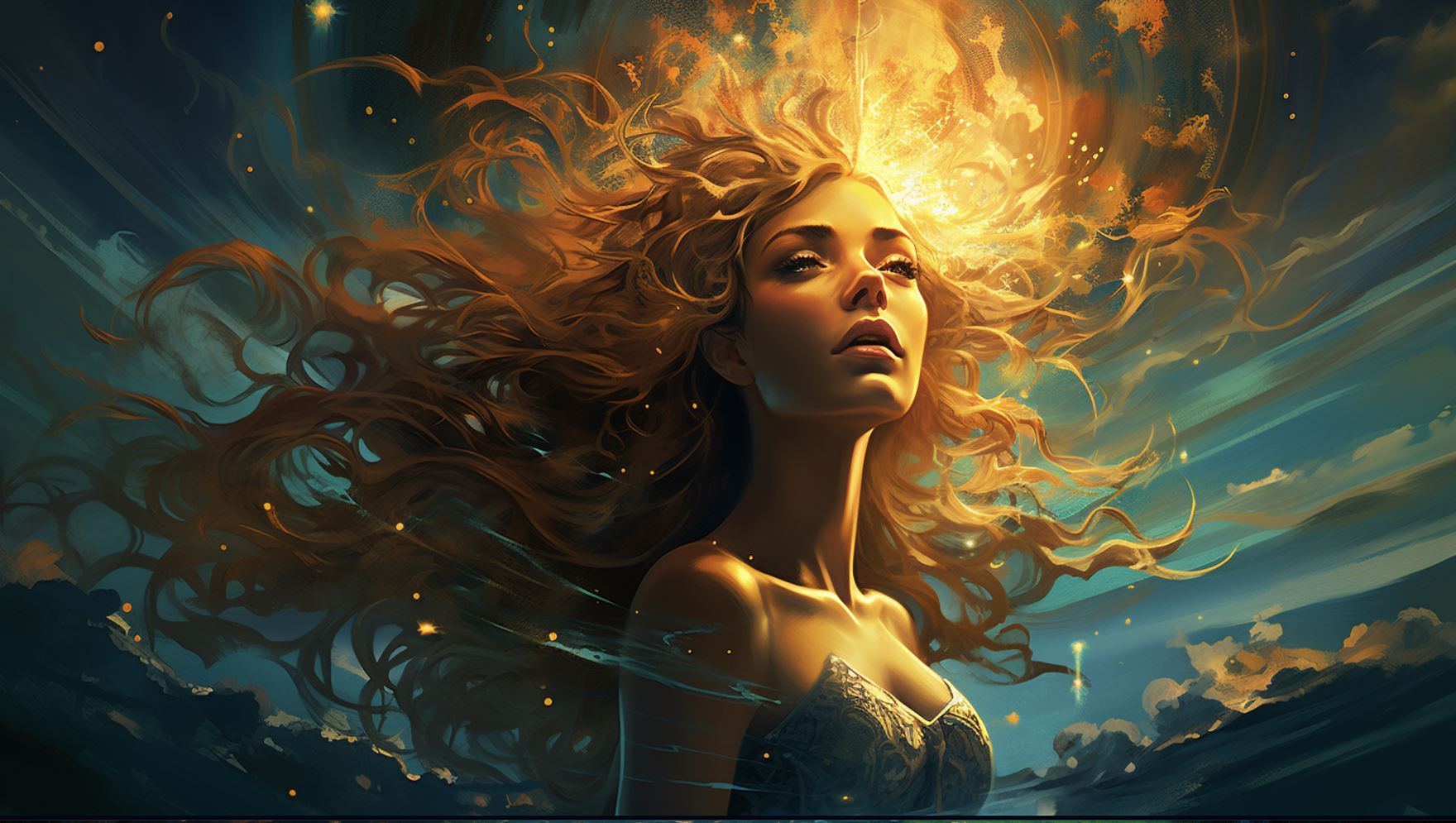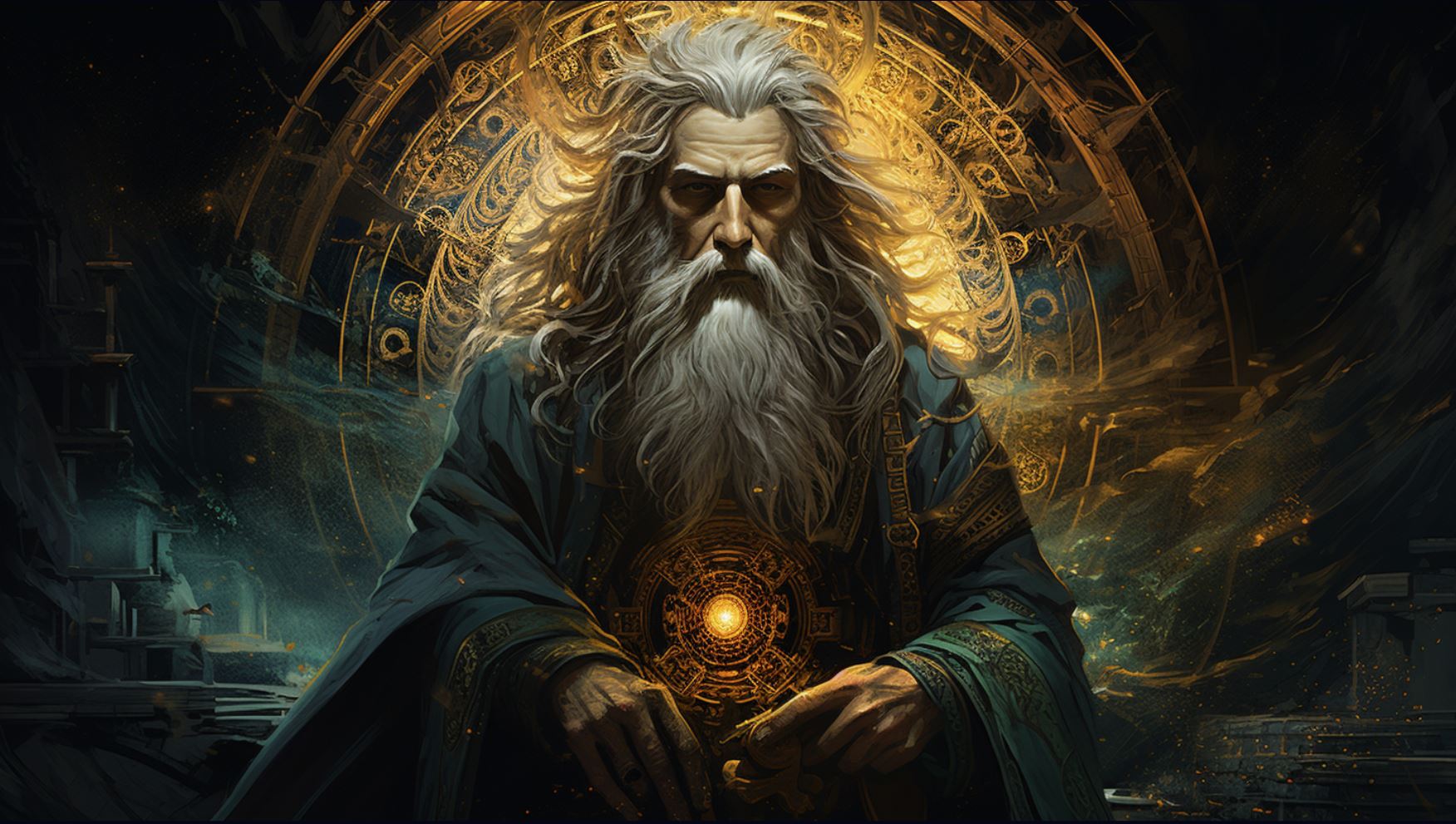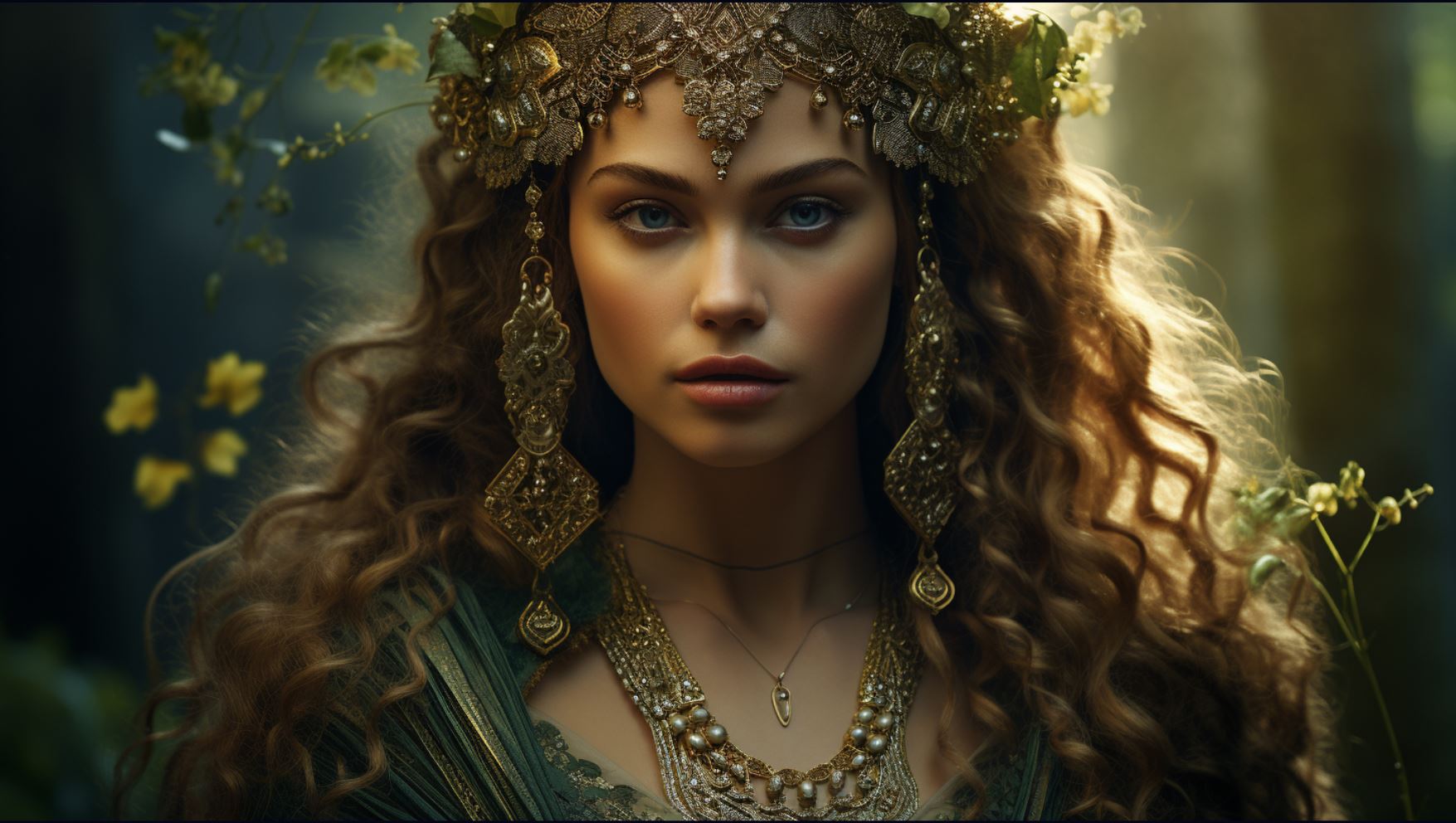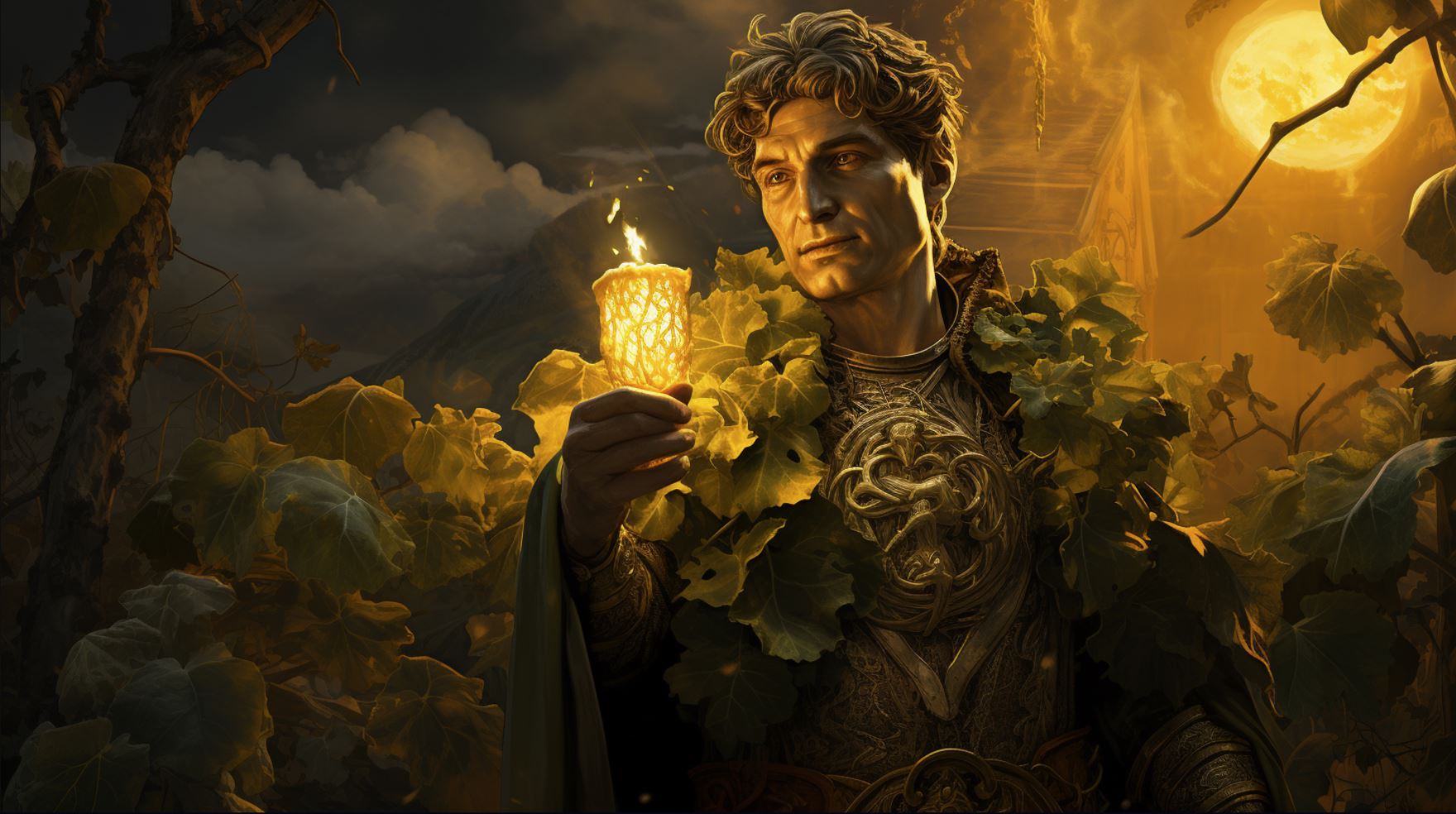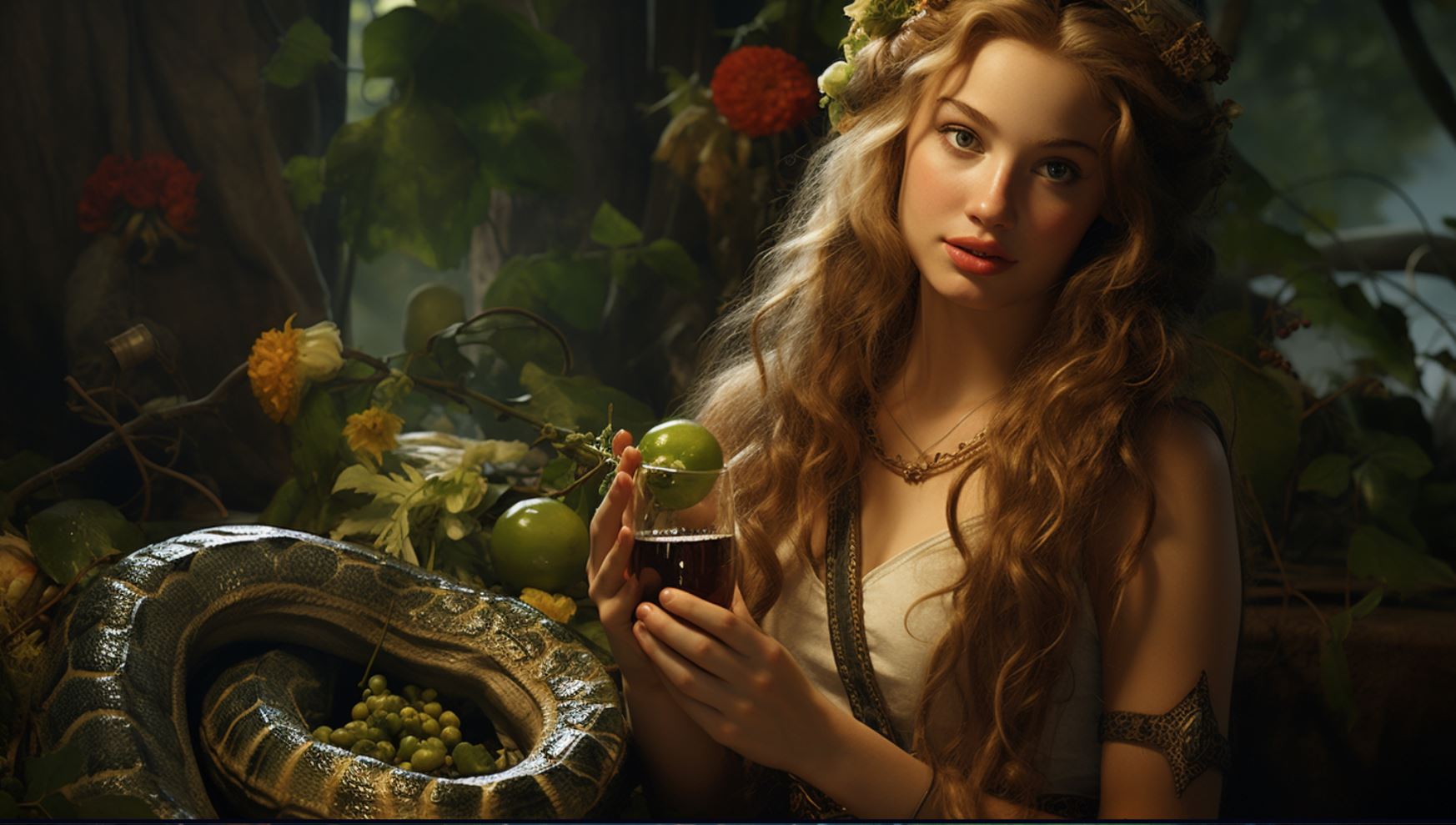Borvo Celtic God: Unveiling the Healing Powers of the Ancient Celtic Deity
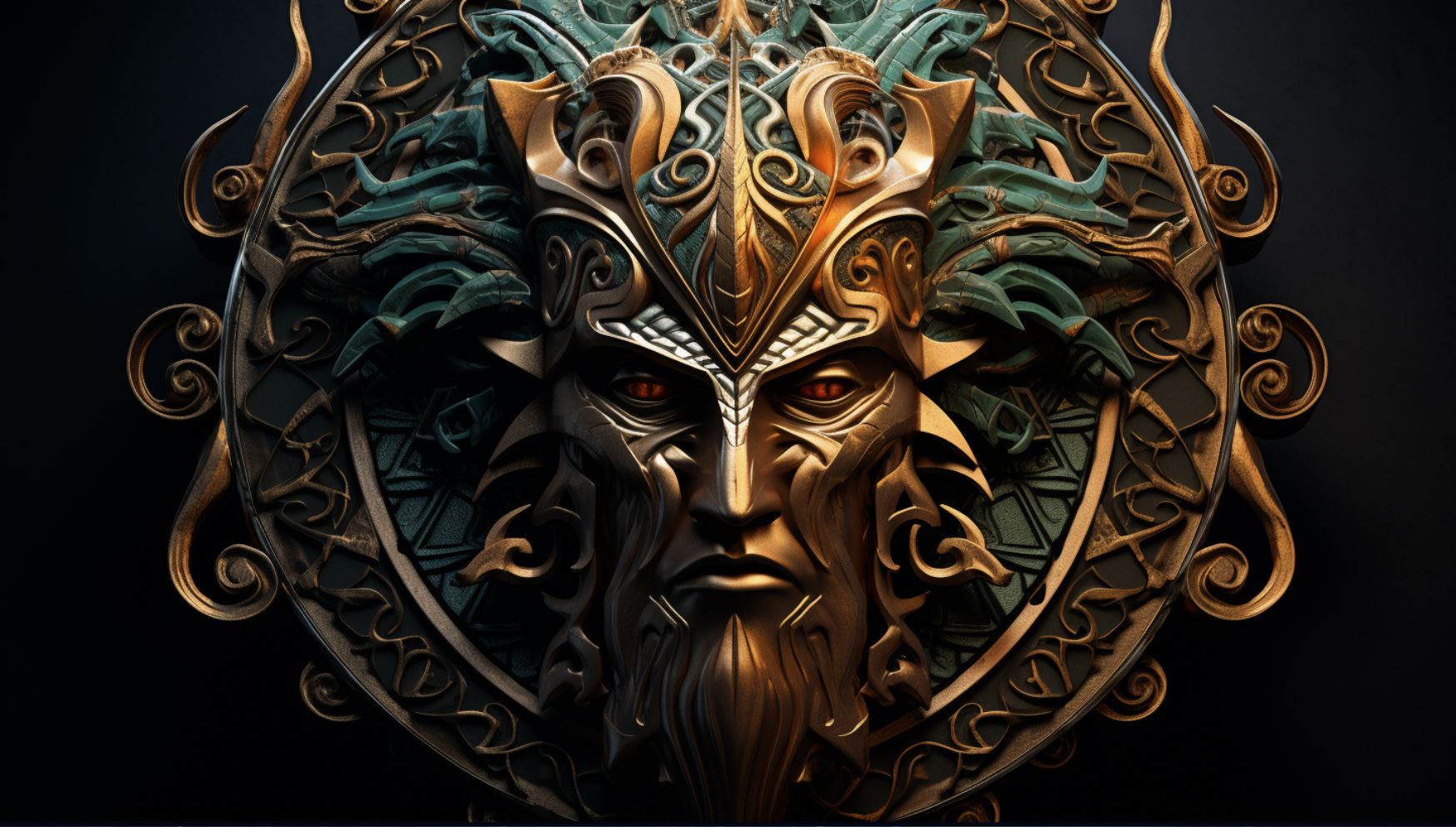
Borvo Celtic God plays a significant role in Celtic mythology, particularly in relation to healing practices. Borvo, associated with thermal waters and represented with symbols like a helmet and shield, was worshipped through rituals and offerings across Europe.
His connection with his consort Damona and their joint worship adds to his cultural significance. Notably, Bourbonne-les-Bains in France stands as a revered sanctuary dedicated to Borvo, while Vichy showcases depictions of Borvo with serpents.
Believed to possess extraordinary healing powers, Borvo’s influence remains significant in modern times, reflecting a continued interest in his legacy and revival.
Borvo’s Role in Celtic Mythology
Welcome to the exploration of Borvo’s significant role in Celtic mythology, shedding light on his origins, associations, and symbolism of his representations.
Origins and Associations
Borvo, a prominent Celtic god, is revered throughout Europe for his connection to healing and thermal waters. Derived from the Celtic word meaning “to boil,” Borvo’s name symbolizes the transformative powers associated with hot springs and mineral-rich waters renowned for their curative properties.
As the son of Sirona, a goddess associated with healing and fertility, and with strong ties to the bovine realm, Borvo’s origins intertwine with ancestral Celtic beliefs. Cattle held immense cultural and economic significance in Celtic society, making Borvo’s association with them particularly meaningful.
Symbolism of Borvo’s Representations
In depictions, Borvo is often portrayed with a helmet and shield, representing his power and protection. These symbols highlight his role as a guardian of healing and restoration.
In addition, Borvo is sometimes depicted holding money and fruits, symbolizing fertility and prosperity.
This accentuates his connection to abundance and blessings from the natural world.
Furthermore, Borvo’s association with serpents is evident, as he is occasionally depicted alongside a snake with horns. This connection highlights his connection to the underworld and the mystical properties attributed to snakes in Celtic mythology.
In summary, Borvo’s representations with a helmet, shield, money, fruits, and serpents encapsulate his influence over healing, abundance, and the spirit world, providing a glimpse into the vast depth of Celtic mythology.
Borvo and Healing Practices in Celtic Culture
Borvo, the Celtic god of healing, played a significant role in Celtic culture, particularly in rituals and practices related to healing and well-being. Let’s explore two key aspects of Borvo’s influence in this realm: rituals and offerings to Borvo, and the sacred springs and thermal waters associated with his healing powers.
Rituals and Offerings to Borvo
In Celtic culture, rituals and offerings were essential in seeking Borvo’s assistance for healing. People would gather at sacred sites dedicated to Borvo, such as temples or natural springs, to perform these rituals.
Offerings ranged from simple items like fruits and coins to more elaborate gifts like artifacts representing fertility and prosperity.
During these rituals, individuals would immerse themselves in the healing waters, seeking Borvo’s blessings and curative powers.
They believed that by performing these acts of devotion and making offerings, they could induce Borvo’s intervention and improve their well-being.
Sacred Springs and Thermal Waters
The Celtic people revered the sacred springs and thermal waters associated with Borvo. These natural sources were believed to possess potent healing properties due to the presence of minerals and their connection to Borvo’s divine essence.
People would travel from distant regions to visit these holy springs and partake in the therapeutic bathing rituals. It was customary to bathe in the waters, seeking relief from various ailments and seeking Borvo’s healing touch.
The belief in the rejuvenating and curative powers of these waters was an integral part of Celtic culture.
These sacred springs and thermal waters were considered gateways to the realm of Borvo, where his healing miracles took place.
The connection between Borvo and these natural elements became a vital aspect of Celtic belief and practices related to health and well-being.
As we delve deeper into the realm of Borvo, his influence extends beyond healing practices.
Stay tuned to learn about his consort Damona and their joint worship, as well as his impact in different regions and his remarkable healing powers in Celtic beliefs.
Borvo and His Consorte Damona
Borvo, the Celtic god of healing, is frequently associated with his consort Damona in Celtic mythology.
Together, they form a divine pair that embodies the sacred bond between healing and agriculture. The relationship between Borvo and Damona is multifaceted, intertwining their roles as deity protectors of both humans and livestock.
The Relationship Between Borvo and Damona
In Celtic mythology, Borvo and Damona are often depicted as a divine couple, representing the union of masculine and feminine energies. Their partnership reflects the interdependence between healing and fertility, as they are revered as patrons of both health and livestock prosperity.
While Borvo is the deity associated with healing and thermal waters, Damona is connected to agriculture, particularly the well-being of cattle. As a goddess of the cattle, Damona brings abundance and fertility to the herds, ensuring their prosperity and the well-being of those who depend on them.
The relationship between Borvo and Damona is harmonious and complementary, with Borvo’s healing powers complementing Damona’s nurturing and fertility attributes. Together, they create a synergistic force that sustains and revitalizes the Celtic community.
Worship and Devotion to Borvo and Damona Together
Worship of Borvo and Damona usually takes place in conjunction, with devotees recognizing the interconnected nature of their domains. In rituals and ceremonies, followers seek the combined blessings of Borvo’s healing abilities and Damona’s agricultural fertility.
During these sacred ceremonies, offerings of gratitude and supplication are made to the divine couple. Devotees present gifts encompassing both healing and agricultural symbolism, such as medicinal herbs, grains, fruits, and items associated with water and fertility.
These offerings symbolize the desire for physical well-being and the abundant prosperity of the community.
Communal celebrations dedicated to Borvo and Damona often take place near natural springs or sources of thermal waters.
Participants engage in purifying rituals, immerse themselves in the blessed waters, and invoke the blessings of Borvo and Damona for healing and agricultural abundance.
The worship and devotion to Borvo and Damona together provide a holistic approach to the well-being of the Celtic community, addressing the interconnectedness of physical health, spiritual vitality, and agricultural prosperity.
Borvo, the Celtic god of healing, holds significant influence in various regions across Europe. Notably, Bourbonne-les-Bains in France stands as a revered sanctuary dedicated to Borvo’s worship and the healing powers associated with him.
The town’s springs and thermal waters are believed to possess therapeutic properties attributed to Borvo’s blessings.
In Bourbonne-les-Bains, pilgrims and visitors immerse themselves in the sacred waters, seeking healing and rejuvenation.
The rituals performed in honor of Borvo include offerings and sacrifices presented at the fountains and rivers, where the deity is believed to bestow his curative abilities upon those in need.
Similarly, in Vichy, France, Borvo’s influence is evident through artistic depictions found throughout the town. One notable representation showcases Borvo in a seated position, accompanied by a serpent adorned with horns.
This connection between Borvo and serpents highlights their association with healing and transformation in Celtic beliefs.
The depictions of Borvo in Vichy serve as a visual reminder of his presence and influence, inspiring reverence and devotion among the locals and visitors alike.
The symbiotic relationship between Borvo and the serpent also signifies the intertwining nature of healing and transformation in Celtic culture.
Bourbonne-les-Bains, France: A Sanctuary for Borvo
Bourbonne-les-Bains, located in northeastern France, holds a special place as a sanctuary dedicated to the worship of Borvo. The town’s thermal waters and springs are believed to possess the healing powers bestowed by Borvo.
Pilgrims and seekers of healing visit Bourbonne-les-Bains with the hope of experiencing the curative influence of the deity.
The rituals and offerings made in the town involve immersing oneself in the sacred waters, beseeching Borvo for relief from ailments and seeking rejuvenation of body, mind, and spirit.
The sanctuary remains a significant cultural and historical site, attracting visitors who wish to connect with the ancient traditions and beliefs centered around Borvo.
Vichy, France: Depictions of Borvo and Serpents
Vichy, a town known for its thermal spas, also showcases depictions of Borvo and his association with serpents.
Borvo’s portrayal in Vichy often features him seated, adorned with symbols of power and healing, while accompanied by a serpent with horns.
These artistic representations symbolize Borvo’s ability to bring about transformation and healing, as serpents are seen as creatures of both power and regeneration in Celtic mythology.
The presence of these depictions in Vichy serves as a visual reminder of Borvo’s influence and the importance of healing practices in Celtic culture.
Visitors to Vichy can explore the town’s cultural heritage, experiencing firsthand the intertwining of Celtic traditions with the healing properties associated with Borvo and the serpentine symbolism.
Borvo’s Healing Powers in Celtic Beliefs
Borvo, the Celtic god of healing, holds significant importance in Celtic mythology and is revered for his miraculous abilities to bring about healing and restoration. This section explores his remarkable healing powers and his connection to the mystical realm of Annwn.
Miraculous Healing Abilities of Borvo
At the core of Borvo’s worship lies his exceptional ability to heal various ailments and injuries. Considered a deity of tremendous power, he is believed to possess the capacity to cure any disease or affliction that befalls mortals.
In times of illness or injury, the Celtic people sought Borvo’s intercession, conducting rituals and offering sacrifices to gain his favor and aid. The most common ritual involved immersing oneself in sacred waters blessed by Borvo, known for their restorative properties.
Borvo’s healing prowess extended beyond the physical realm, as he was also believed to offer solace and healing for emotional and spiritual wounds. The Celtic people turned to him for guidance, seeking relief from troubles that troubled their hearts and minds.
Borvo and the Realm of Annwn
In Celtic mythology, Borvo is closely associated with the enchanting realm of Annwn. It is believed that within this magical realm, those afflicted with illnesses could receive healing through dreams or visions granted by Borvo.
This connection to Annwn further emphasizes Borvo’s supernatural healing abilities, suggesting that his influence extends beyond the mortal realm and into the ethereal dimensions. The Celtic people regarded the realm of Annwn as a sacred space where divine intervention and miraculous healing could occur.
Devotion to Borvo within Celtic culture involved deep respect for his role as a healer and protector. The rituals and sacrifices offered to him aimed to harness his extraordinary powers and invoke his presence, paving the way for healing and restoration.
As the cultural significance of Borvo endures through time, his healing powers continue to captivate the imagination. The revitalized interest in Borvo’s worship serves as a testament to his enduring legacy and the belief in the transformative healing he bestows upon those who seek his aid.
The captivating figure of Borvo, with his young and handsome depiction embodied by long, blonde hair and radiant eyes, continues to inspire awe and reverence in those who adore him for his miraculous healing powers.
- Immersing in sacred waters blessed by Borvo
- Seeking solace and healing for emotional and spiritual wounds
- Connection between Borvo and the mystical realm of Annwn
- Receiving healing through dreams or visions granted by Borvo
- Continued devotion to Borvo and the revitalized interest in his worship
Continuation of Borvo’s Worship in Modern Times
Even in modern times, the legacy of Borvo, the Celtic god of healing, continues to hold cultural significance and inspire a revival of his worship.
His enduring influence can be observed through various aspects.
Legacy and Cultural Significance
The legacy of Borvo has left a lasting impact on Celtic culture. The reverence for his healing powers and association with thermal waters has transcended generations. Borvo’s role in Celtic mythology as a powerful and effective healer has embedded his presence in the collective consciousness of Celtic communities.
Throughout Europe, especially in regions that were once inhabited by the ancient Celts, the memory of Borvo persists. Local folklore, oral traditions, and rituals all bear traces of the cultural significance attributed to this divine figure.
His name and imagery endure as symbols of hope, vitality, and holistic well-being.
Revival and Continued Interest in Borvo
In recent years, there has been a noticeable resurgence of interest in Borvo and a revival of his worship. Scholars, historians, and individuals with a deep appreciation for Celtic culture have actively sought to reestablish connections with this ancient deity.
Various organizations and groups dedicated to Celtic spirituality and paganism have emerged, placing Borvo at the center of their practices. They organize ceremonies, rituals, and gatherings to honor and celebrate the healing powers associated with Borvo.
Additionally, the digital age has provided a platform for the dissemination of knowledge and the sharing of experiences related to Borvo. Online communities, forums, and social media groups facilitate discussions on Borvo’s lore, rituals, and healing methods, fostering a sense of community and encouraging new practitioners to explore their connection with this Celtic deity.
- Celtic spirituality organizations have emerged, focusing on Borvo’s worship
- Revival of ceremonies, rituals, and gatherings in Borvo’s honor
- Online communities promoting knowledge and shared experiences of Borvo
This revival serves as a testament to the enduring allure and relevance of Borvo as a deity, showcasing the continued belief in his healing powers and their practical application in the modern world.
.











